- This feature was published in RAIL 820, and is available to buy on Android or iPad.
2016 was a busy year for rolling stock procurement. Among the year’s headline announcements were large new fleet orders coming in for the Northern, TransPennine Express and Greater Anglia franchises.
Shortly before the end of the year, Merseyside added its name to the list of regions that will now receive new trains after Swiss manufacturer Stadler beat off rival bidders to secure a £460 million contract to deliver a new fleet of 52 electric multiple units by 2020-21 (RAIL 817).
But this was an order with an added twist. Instead of a train operating company (TOC), rolling stock company (ROSCO) or the Department for Transport (DfT) leading the procurement process (as has been the conventional route since privatisation in 1995), it is the Combined Authority of the Liverpool City Region itself that is calling the shots, via its Passenger Transport Executive Merseytravel.
This unorthodox strategy of public sector intervention was borne from the devolution deal struck with the DfT in 2002. This granted full franchising authority to Merseytravel and placed the Merseyrail concession outside of the national franchising system, handing the City Region unrivalled freedom to decide on matters relating to its operation.
In July 2016, RAIL outlined to what extent Merseytravel has exercised this rare localised autonomy, to shape an impressive transformation of a once run-down network notoriously dubbed ‘misery rail’ by its long-suffering users (RAIL 804).
In partnership with Merseyrail Electrics, which has operated the Merseyrail concession since it was handed a 25-year contract by Merseytravel in 2003, more than £40m has been spent on sprucing up and renewing the dingy 1970s decor of the network’s five city centre stations. A similar amount has been spent on refurbishing the ageing fleet of Class 507s and ‘508s’, which entered traffic in 1978.
Yet despite this significant investment, acquiring new trains has long formed the cornerstone of Merseyrail’s bespoke improvement plan, to facilitate ever-rising passenger numbers and Merseytravel’s ambition to have the most accessible network in the country. It is also a key priority of the City Region’s Long Term Rail Plan, published in April 2014.
“Looking at the average age of fleets per TOC, we stick out like a sore thumb,” says Merseytravel Rolling Stock Project Director David Powell, who has overseen the EMU procurement process since it began in October 2015.
“The only operator with an older fleet is Caledonian Sleeper, who are, of course, getting new trains. But nonetheless our current fleet continues to serve us very well, so there isn’t a sense of ‘just because they’re old they must be appalling’… because they’re not.
“We are routinely top of Which? operator satisfaction surveys, and score highly for punctuality and reliability with Transport Focus . But we wanted our fleet to be safer, faster and able to carry more passengers, and future-proofed to enable our railway to expand.”
Also breaking from conventional train procurement is Merseytravel’s decision to own the trains itself - it prefers to directly lease them to Merseyrail rather than its current arrangement involving Angel Trains.
This might seem an unnecessarily expensive decision, given that the City Region must now source almost £500m to bring the new fleet into public ownership, but Powell stresses that it will pay dividends in the long term.
“The management of the railway is devolved to us. At the moment we have an arrangement where we lease the current Class 507 and ‘508’ trains from Angel Trains and then lease them in turn to Merseyrail. That deal works fine, but we wanted to look at lots of different ways we could construct the deal differently. We looked at the pros and cons of owning the fleet instead, and it is a very efficient way of doing it.
“That was a big decision, but it means you can start to look at procuring a train that works specifically for your network. There’s no need for us to think about cascading it around the country and making these ‘go anywhere’ units that can be used by lots of different operators.
“This potential to customise what we’re buying to meet the specific needs of our network then becomes a reality, and that’s been a pretty significant part of our procurement. We understand it could potentially bring cost in as well, but value for money for the public purse has been thought about through all of this, and the economics that underpin it are very efficient.”
Funding became an even bigger challenge for Merseytravel following the City Region’s decision to bar any raids on local council taxpayers or fare-paying passengers to increase locally raised revenue, meaning that an alternative formula had to be found.
Most of the cash will therefore be found from the Liverpool City Region Combined Authority’s external borrowing facility, which recently yielded a £190m low-interest loan from the European Investment Bank for this purpose, while anything else will come from what Merseytravel describes as “self-financing”. It calculates that the capital outlay will eventually be recouped from lower energy and maintenance costs than those required by the older trains that are being replaced, and through the 2.5% annual growth in passenger numbers that the new fleet will be better equipped to handle.
‘Tax take’ is also expected to increase across the City Region, and find its way back to local authorities by other channels stemming from the economic stimulus that will be provided by the fleet (it can carry 60% more passengers than current units, and will shave 10% off journey times thanks to superior acceleration and braking technology).
“This will improve people’s ability to move around the city quickly, and there’s a big increase in capacity which creates potential for the railway to grow,” adds Powell.
“We’ve had this assessed by economists, and their view was that this is worth an extra £70m per annum of GDP for the City Region and will lead to the creation of 1,000 new jobs. If you invest £460m that’s what you get back, which is a pretty healthy equation.
“The red lines I was given (for raising capital) put us in quite a challenging financial environment, but we’ve been able to work the business case through so that over the course of its life these units are self-financing. That’s done through a combination of reducing the cost of maintaining and operating them, and we believe that providing a faster, higher capacity and more attractive environment will provide a significant amount of additional patronage.
“That’s what we believed before we started the procurement, and so the next test was: can the procurement actually deliver the business case? The answer is yes, it did.”
In addition to making the numbers stack up by delivering operational cost savings, the guiding principles of Merseytravel’s specification to bidders included high levels of customer feedback that it had carefully gathered in the run-up to shortlisting five bidders in January 2016 - Bombardier, Construcciones y Auxiliar de Ferrocarriles (CAF), Mitsui, Siemens and eventual winner Stadler.
Meanwhile, the £460m deal also required the bidder to maintain the EMUs from refurbished depots at Kirkdale and Birkenhead, and to deliver the power upgrades and new infrastructure required by the higher-performance units. Approximately 150 depot staff currently employed by Merseyrail will therefore transfer to Stadler later this year, before the first new train begins testing in 2019 and then the bulk of the new fleet is introduced in 2020.
Powell adds: “We did a piece of work with Transport Focus where we consulted lots of Merseyrail users on things they might like to see from a new fleet, which we used to partly write our spec. We wanted to be able to carry 60% more passengers, but not if that meant ripping lots of seats out, which is what lots of passengers told us very clearly. This train therefore has slightly more seats than the existing fleet, but much better provision for standing passengers. We still have 2+2 seating configuration, but bigger vestibules, a wider aisle, plenty of grab hooks and inter-car spaces that are now usable space.
“We used a number of fleets as examples in the survey, but most notably London Overground’s and the S-Stock fleet on London Underground’s sub-surface network. We got a lot of comments like ‘that’s OK for Londoners but it’s not what we want here’ from people who wanted to keep facing seats to have conversations on trains, for example. Some of the responses were quite pithy, which is one of the things Scouse humour is well known for, I suppose.”
However, arguably the two most crucial guiding principles in the specification were addressing accessibility and safety, and these have subsequently played a large part in generating the final designs.
The need to prioritise both of these areas stems from two sources that have loomed large over the entire procurement process - the physical characteristics of a network largely inherited from the Victorians, and the report compiled by the Rail Accident Investigation Branch (RAIB) in response to a fatal incident at James Street in 2011.
The latter was a sad case that served to reinforce and perhaps expedite the case for new trains - a 16-year-old girl was killed after falling from the platform edge and beneath a moving train, resulting in the train’s guard eventually being prosecuted for manslaughter. A host of safety improvements was recommended by the subsequent RAIB report, in order to reduce the gap between the train and platform edge, and to help prevent any similar deaths.
However, Merseytravel’s desire to reduce this gap had already pre-dated the James Street incident in 2011, and it has long sought a solution to the accessibility problems caused by a significant variance in platform heights across the network.
Powell says the Stadler design will address both safety and accessibility, by reducing the gap a person could fall through at the train/platform interface, and mitigating the need for staff to deploy ramps to provide mobility.
While work must continue to ensure all Merseyrail stations have step-free access, Powell says the new design - featuring lower floors and sliding steps - will enable anyone to board the new trains unassisted from the platforms.
He explains: “A very unfortunate part of our history is that there was a fatality at James Street in 2011, which was widely publicised. There were some very stringent safety recommendations made in the subsequent RAIB report, which made it clear that the onus is on Network Rail, Merseytravel and Merseyrail to get together to sort out and improve a number of features on the network when the opportunity arises, most notably when the rolling stock is replaced.
“Meeting that report will improve safety at the train/platform interface, so let’s use the opportunity - a once in a lifetime opportunity - to address some of the weaknesses like getting on or off the train.
“One of the recommendations was reducing the gap between the train and the platform, which is obviously the doorways but also between the doorways. One of the interventions we’ve therefore made is the profile we have in the lower part of the new body sides. It takes the gap, which can currently be over half a metre diagonally or sometimes even horizontally, and makes it much tighter and more vertical so the risks of anyone going into that gap are significantly reduced. Also, with that profile we think that if you did fall in that gap, you would be deflected back into the platform.
“Stadler’s design also proposed a sliding step on every door, which has an ultrasonic sensor to sense where the platform edge is and stops 35mm short. What that means is you get a consistent relationship between the train and the platform everywhere down the length of the train, even on a curved platform. You do find other trains with sliding steps, but the bit that’s impressive is the intelligence.
“Accessibility regulations say you need 75mm horizontally and 50mm vertically, as that’s where someone in a wheelchair can board or alight unassisted. But this is going to be better than that, which I think is a bit of a game changer.”
Other safety features of Stadler’s design include an illuminated portal around each door which operates a green, yellow and red traffic light system, to indicate whether it is safe to board or alight. The doors also have sensitive edges that will detect an object as thin as a bag strap getting stuck in the door, triggering an emergency stop if the train pulls away.
Stadler has also addressed personal safety through the extensive provision of on-board CCTV, which will produce a video feed broadcast on screens within the train. There is also brighter lighting, and a more open plan saloon space that would make anti-social behaviour more visible to cameras or on-board staff. Further reassurance to passengers is also provided by making the driver visible to passengers through a transparent cab door, while the drivers themselves will have a direct communication link with the saloon and control room.
Addressing safety has also led to the most controversial aspect of the procurement process, which is Merseytravel’s decision to opt for Driver Controlled Operation of the doors (DCO).
Although this arrangement is widely deployed across the country, it will make the position of 220 guards currently employed by Merseyrail redundant. It could also spark a repeat of the industrial action that has paralysed services run by Southern for much of the past year, over that operator’s identical decision to introduce a new fleet of DCO trains.
Merseytravel has vigorously defended its position, however, saying DCO will help it to implement the recommendations of the RAIB report. It has also pledged publicly to guarantee guards’ continued employment elsewhere within the business, including the creation of more than 60 new roles to provide on-board customer service. In any case, all bidders came back with DCO in their designs, making the decision an easy one for Powell and his team.
Powell argues: “Currently we have a conventional arrangement of operation with a driver and a guard. But one of the real downsides of that, which is included in the RAIB report, is that neither the driver nor guard can see the platform edge as the train departs. And so, once the doors are closed, the despatch is essentially blind.
“We also thought the right thing to do was to see what our bidders had to say, who have experience operating right across the world. We wanted to see how they proposed to address the recommendations of James Street, and bidders at each stage of the bidding recommended DCO.
“Technically DCO is the same as DOO, but Driver Only Operation suggests that there’s only ever the driver on board. We call it DCO as we want to give people the reassurance that other people will be on board, but not necessarily all the time.
“Cameras down the side of the train will give 100% platform coverage to the driver, and we are working closely with the authorities and our operator to get that right because the driver has to be looking ahead at signals, and so the detailed design and testing of the train will have to work out quite how that works.
“We aim to create the on-board customer service role which will be targeted at certain locations and times of day when we think they will be more effective than the guard at giving passengers assistance.
“The guard’s main role at the moment is despatching the train, so inevitably every two minutes they have to break away from whatever they’re doing to go and concentrate on opening and closing the doors. These people will be able to spend a lot more time with passengers, and not worrying about pulling into stations. We will also still have on-board cleaners, revenue protection staff and additional security at different times of the day.
“The position we have is that none of the current guard complement is forced to leave. That means the reductions in numbers will come from voluntary redundancy, redeployment or early deployment, and we want to make sure that’s managed sensitively and in the interests of the staff between Merseyrail management and the unions.”
Shortly after RAIL’s interview with Powell, the RMT union issued a deadline of January 26 for both Merseyrail and fellow operator Northern, which is also introducing DCO trains, to give firm undertakings that no guards would be withdrawn from trains or lose their safety-critical roles of opening and closing the doors.
It issued a statement that criticised Merseyrail’s policy, citing that Stadler is currently building new trains that are conventionally operated for Greater Anglia, while ScotRail (like Merseyrail a franchise owned by Abellio) is introducing a new fleet of trains that retains the traditional role of the guard.
As this issue of RAIL went to press, talks had broken down on February 1 without any resolution, and the RMT was preparing to ballot Merseyrail staff over potential strike action.
With further announcements expected imminently, the ‘Miseryrail’ tag left behind so many years ago might yet make a reappearance.
Further reading
- Higher hopes for Halton Curve’s comeback, RAIL 803.
- Merseyrail plans its next moves, RAIL 804.
- £460m deal approved for 52 new Merseyrail trains, RAIL 817.
- This feature was first published in RAIL 820.

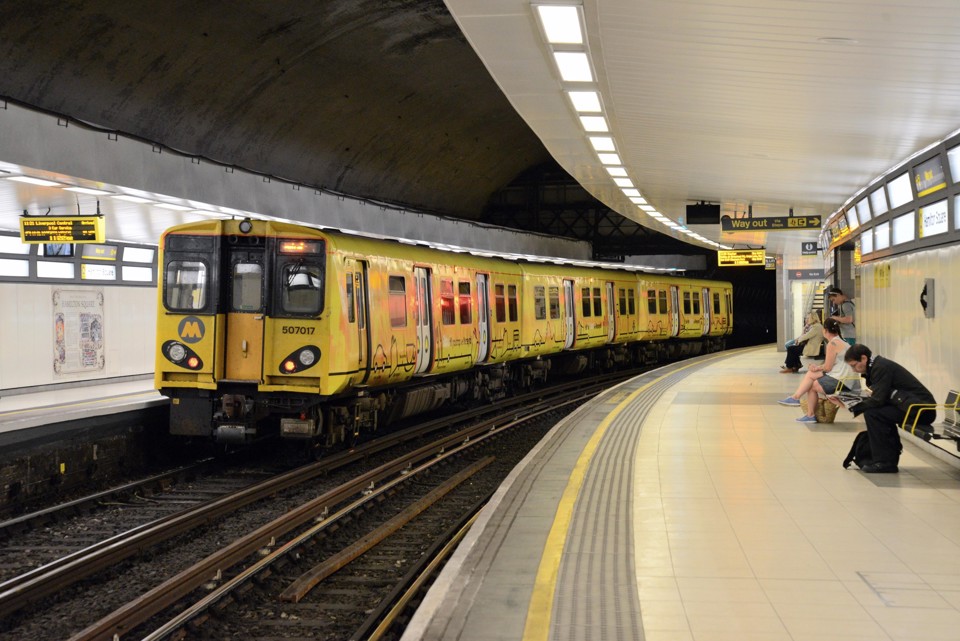
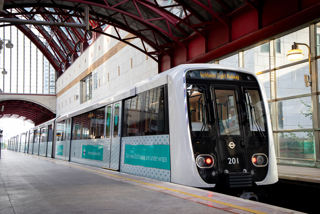
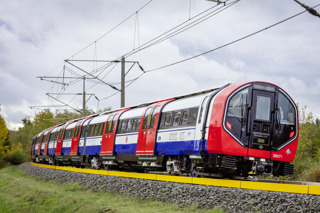

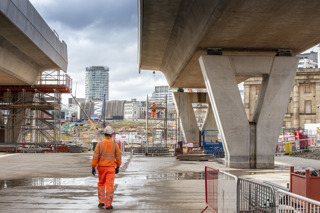
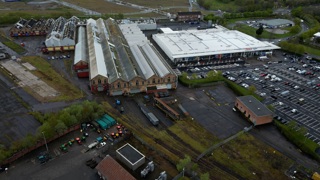











AndrewJGwilt1989 - 05/02/2018 03:51
Most of them will be DC 750v 3rd Rail. And some will be dual voltage as they could operate on AC 25kv Overhead on other services.